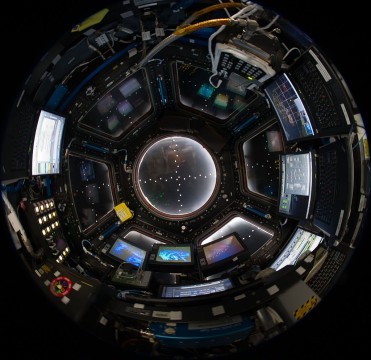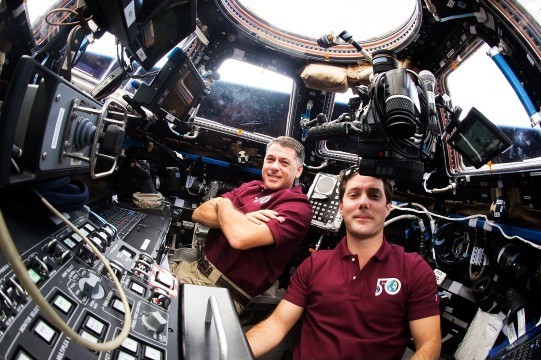
Cupola is berthed to the botton port of Node 3. (Tranquility)
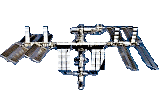

Cupola is berthed to the botton port of Node 3. (Tranquility)

The Cupola (Italian for dome) is an observatory module for the station. It has seven windows including an 80 cm window which is the largest ever used in space. The Cupola provides an observation and work area for the ISS crew giving visibility to:
1. Support the control of the station robot arm. (Canadarm2)
2. Give general external viewing of the station, Earth and space.
The Cupola is important to the station crew as previously they have been confined to looking out of small port holes and the 50 cm window in the U.S. laboratory (Destiny).
The shape and multi window configuration the Cupola has been compared to the cockpit window of the Star Wars Millennium Falcon.


The Cupola was first conceived in 1987 as a workstation for operating the station's robotic arm (Canadarm2), maneuvering vehicles outside the station, and observing and supporting space walks. This is similar to the operation of the U.S. Shuttle's robot arm from the Orbiter's Aft Flight Deck.
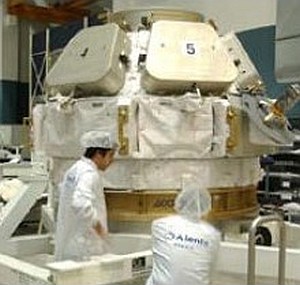
There were to have been two Cupolas, one on either end of the body of the station formed by its modules and nodes. The Cupola was initially named the 'windowed workstation', to distinguish it from other computer-based workstations inside of the station.
The Cupola evolved from a variety of different alternative shapes into a final proposed octagonal shape with eight similar windows around the periphery, four quadrant windows overhead, and mounted on a cylinder.
The module, now called the 'Cupola' was designed to fully contain at least two crew members 'floating' side by side in zero-g neutral body posture.
Contracts to build the Cupola were awarded to Boeing and McDonnell Douglas. The McDonnell Douglas design was basically the same as NASA's original. Boeing's however was smaller; a hexagon, with a single large circular overhead window, and a much shorter cylinder.
The Boeing design was unable to accommodate two crew members completely, and would instead require the crew to dangle their legs and bodies into the Node. This design, however, was the one ultimately built.
The Cupola was completed it in 2003 but its launch was repeatedly delayed. The delivery method also changed from the Cupola being mounted on a Spacelab pallet accompanying Kibo's External Facility to being mounted on the same pallet as Node 3. (Tranquility).
It was eventually delivered to the station on Space Shuttle mission STS-130 [Flight 20A] on 8 February 2010 and attached to the nadir (Earth facing) port of Node 3 (Tranquility).
The Cupola is berthed to the Node using the Common Berthing Mechanism (CBM).
It was originally berthed to the forward port of Tranquility for launch and later transferred to its nadir port after Tranquility had been berthed to the Node 1 (Unity).
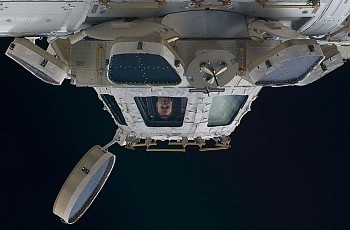
Height (Overall): 1.5-metre (4.9 ft)
Diameter (Maximum): 2.95-metre (9.68 ft)
Mass (Launch): 1,805-kilogram (3,979 lb)
Mass (On Orbit): 1,880-kilogram (4,145 lb)
Electrical Power: Node 120 V Interface
Dome Material: Forged Aluminium 2219-T851
Skirt Material: Aluminium 2219-T851
MDPS Shutters: DuPont Kevlar/3M Nextel
Top Window Diameter: 80-centimeter (31 in)
Windows: Fused silica and borosilicate glass
Thermal: Kapton multi-layer insulation blanket
